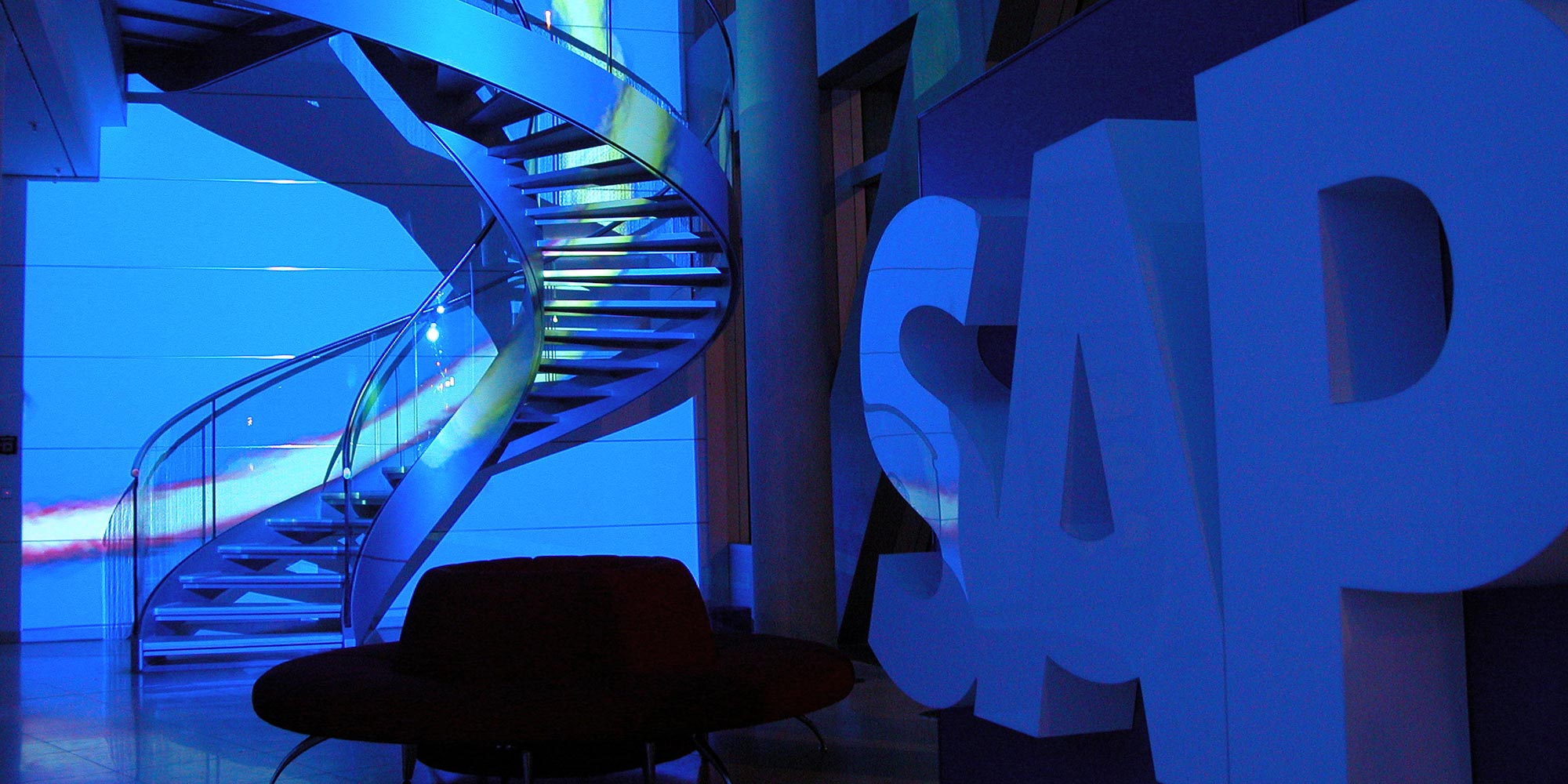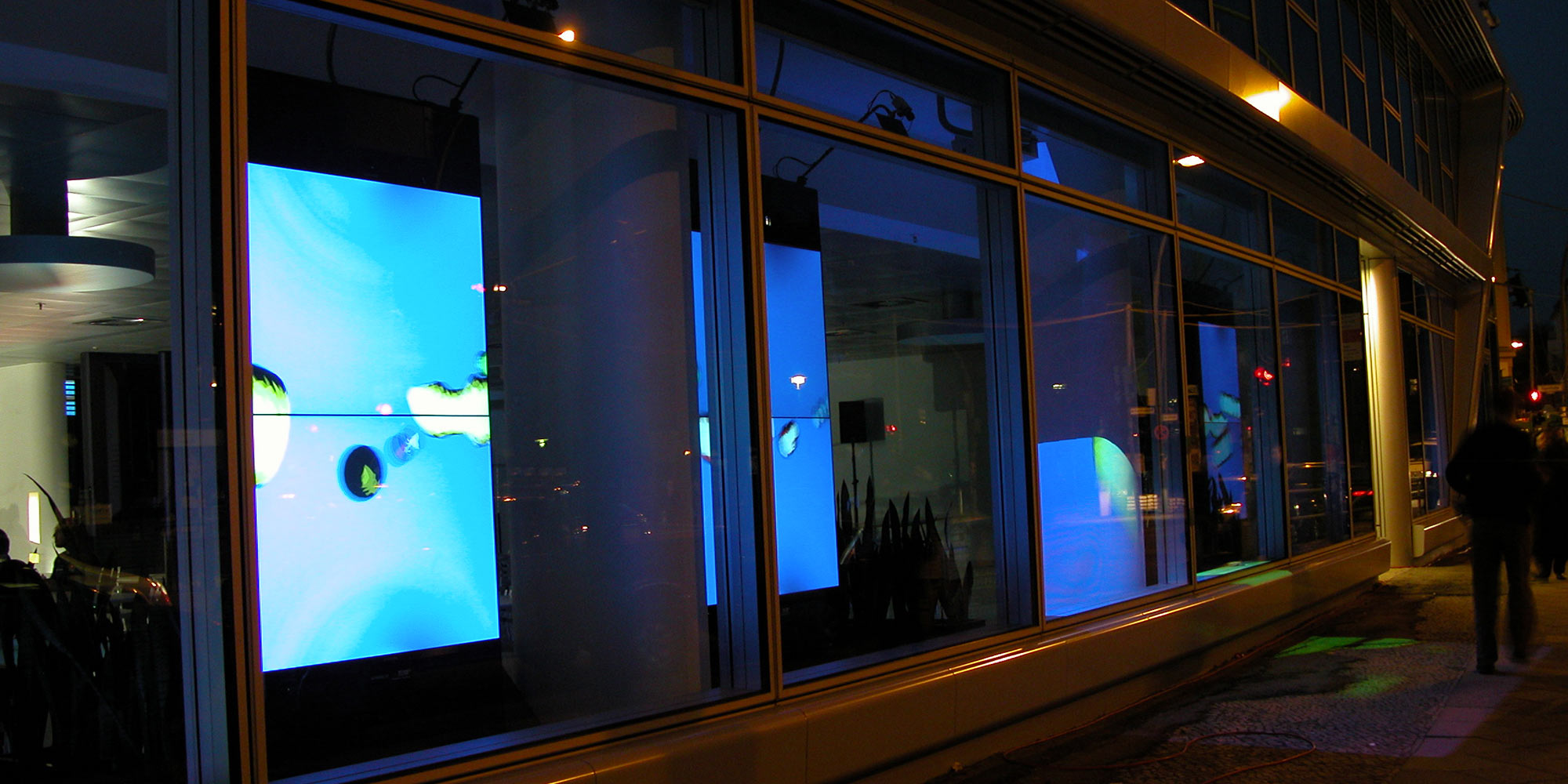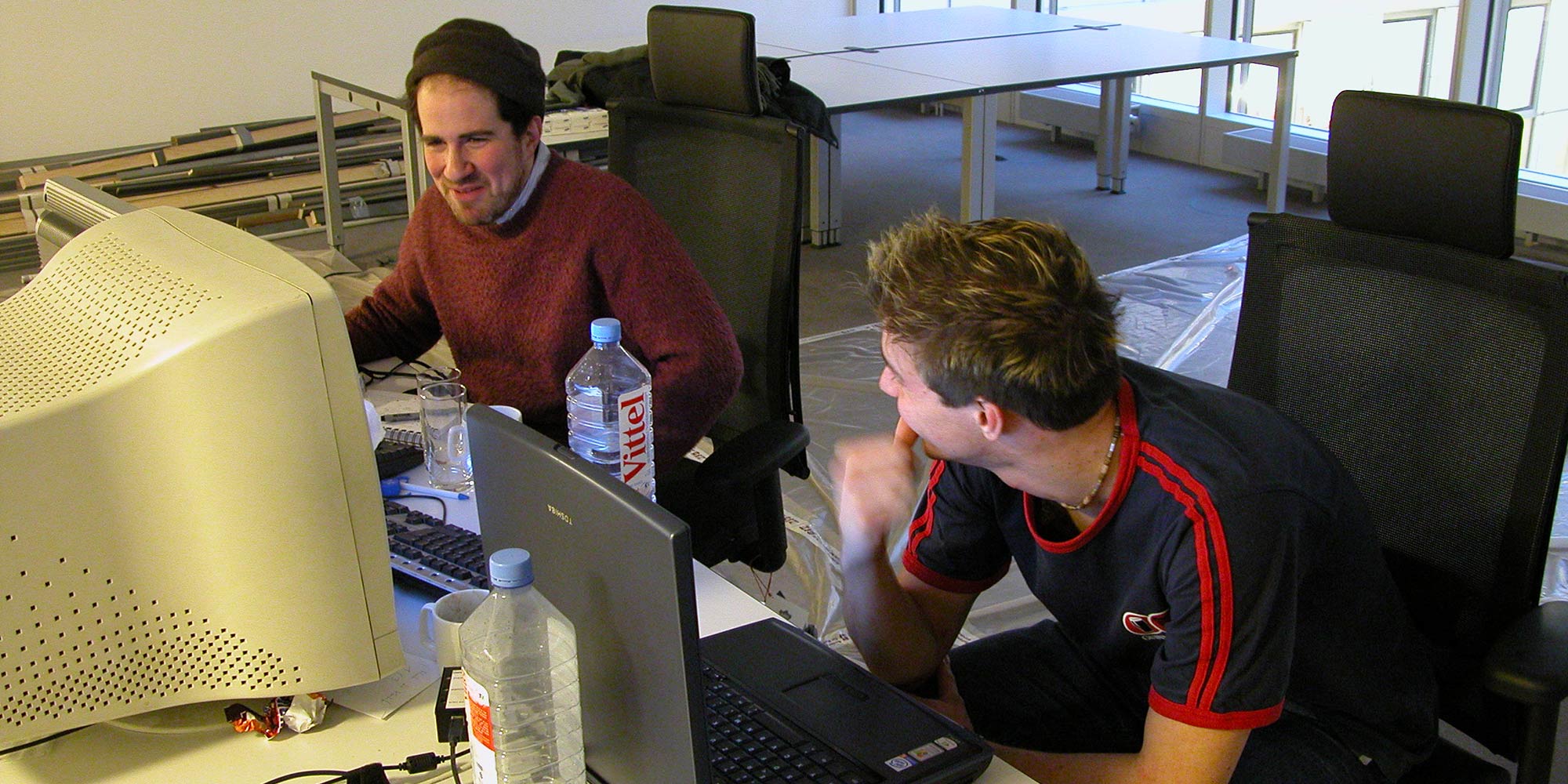The collaboration between SAP and Ars Electronica has been in place since 2002. This partnership is a prototype for new models of collaboration between art, business, technology and society. The collaboration ranges from media art presentations at SAP events and novel visualizations of information to joint research projects and innovative social initiatives.
SAP & Ars Electronica – A Collaboration for the Art of Tomorrow
With modern, transparent architecture, the new SAP office takes its place as the capital’s representative office in Berlin Mitte. The goal is to make passers-by and business people experience SAP’s innovative thinking both during business hours and after hours in this lively and creative district. At the same time, the company wants to open itself up to dialog with the city and society. The transparency of the building and the media art merge to create a special spatial experience and encourage an interactive engagement with the building.
The centerpiece of the medial mise en scène is “The Hidden World of Noise and Voice”, an installation by Golan Levin and Zachary Lieberman. The New York media artists have created software that depicts sounds and voices in virtual space. Everything that the installation’s microphones pick up is interpreted by the system and translated into corresponding dynamic forms that subsequently populate the environment as virtual creatures. For example, a continuous tone, depending on its pitch, is represented as a thin snake or a fat worm slithering from the position of the microphone at which it originated out into three-dimensional space. A sonorous “blob”, on the other hand, generates a compact shape that sluggishly moves forth from its source. And this is how the previously empty space is transformed into a world full of formal variety, a domain of computer graphics whose diversity and dynamics suggest the species richness of the oceans. The windows offering glimpses into this hidden world are rear projection display units (Mitsubishi DLPs) that are capable of providing clear images in daylight conditions. Then, when night falls, the building’s architecture is saturated by a series of large-scale projections. The architecture of the lobby and the ceilings of each upper level are visually dissolved by projections. This opens up a view through the exterior shell of the hidden world and makes it possible to follow the paths of the generated objects through the building from their point of origin to their vanishing point in the heavens above Berlin.
Credits
Idea and concept: Gerfried Stocker, Horst Hörtner, Martin Honzik
Interactive visuals: Golan Levin, Zachary Lieberman
Project management: Martin Honzik
Software Design and Development: Wolfgang Ziegler, Peter Brandl, Roland Haring, Stefan Feldler, Christian Naglhofer, Christopher Lindinger, Florian Berger
Interface Design and Development: Stefan Feldler, Stefan Mittlböck-Jungwirth, Erwin Reitböck, Dietmar Offenhuber, Peter Freudling, Robert Abt
Virtual Design and Development: Andreas Jalsovec, Peter Freudling, Reinhold Bidner, Helmut Höllerl, Stefan Schilcher, Martin Bruner, Nina Wenhart, Christine Pilsl
Coordination: Yvonne Hauser, Pascal Maresch
Special Thanks: Karsten Koch, Astrid Kasper, Hannes Fickenscher, Marc Braun, Robert Westphal, Goebl und Matte



